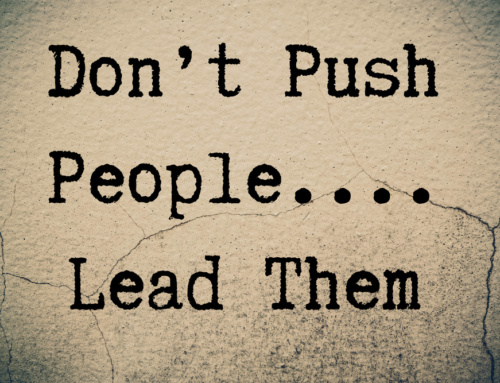 We’re often too quick as leaders to throw in the towel on teams that have whiffed. That’s a mistake that may be more costly to performance and morale than the initial and temporary failure.
We’re often too quick as leaders to throw in the towel on teams that have whiffed. That’s a mistake that may be more costly to performance and morale than the initial and temporary failure.
My quick answer to the question in the post title is: absent any visible, destructive behavior that may have contributed to the team’s missteps, the point in time when it becomes clear that a team has failed is the right time to double-down with a fresh challenge. Preferably one of those big and ugly challenges.
We all know that success most often occurs after a series of failures, yet this same stubborn tenacity to overcome setbacks that is so widely celebrated in our culture and with our heroes, is too often ignored in corporate team settings. After all, it’s not comfortable for executives or sponsors to spend much time associated with teams that have failed.
Team Longevity and Success:
There are well-documented criteria (Hackman, Thompson et. al.) for creating team success: a clear and guiding purpose, clear membership, enabling structures, the right kind of leadership AND team longevity.
Perhaps I’m biased by the technical product development and IT projects I’ve hung around most of my career, but typically the projects are difficult and often, the team members are being asked to do something that’s not been done before…at least in their organization. The need for team learning coupled with the socialization dynamics present in every (new) team environment, demand a commitment to longevity as one of the key enabling factors for success.
Beware the Mirages:
We’re quick to attribute team failures to external factors (fundamental attribution error) or, to see Lencioni’s 5 dysfunctions in almost every struggling team environment. Just be aware, that you may very well be seeing a mirage…something you think you should see but that isn’t really present.
Building trust, developing comfort with conflict, committing to the effort, accepting accountability and focusing on results are all important, and realizing the team culture to foster those behaviors takes time.
It takes courage for a leader or sponsor to stand up and defend a failed team. That shielding effort expends political capital and if the outcomes continue to be poor, the capital is squandered. Leaders and sponsors coping with struggling teams are well-advised to look for the following attitudes and behaviors as they assess whether to take a stand or fold the team.
5 Signs that Your Failed Team Merits More Time
1. An absence of finger-pointing and excuse-making. In my experience, there’s a direct inverse correlation with finger-pointing and the potential for team success.
2. Genuine group and authentic distress at the failure. While a judgement call, it’s not that hard for a leader to distinguish between embarrassment or fear or repercussions type distress versus genuine “We failed and it bugs the crap out of me/us,” distress.
3. An emerging Apollo 13 mentality… “failure is not an option.” A sense of emergency, an intense focus on the goals of the initiative and extraordinary efforts to innovate are healthy signs that the team merits more time.
4. External validation that the initiative is (still) highly relevant. There’s a tendency for firms and teams to irrationally pursue failed objectives. Avoiding this sunk cost/escalation of commitment trap is difficult and important. The assumptions of and need for the project from an external customer or market perspective must still be valid before offering more time to the failed team.
5. A hunger for insights and knowledge from outside the team. Instead of turning inward and developing a bunker mentality, the team recognizes the need for help and pursues it. I’m particularly convinced of a team’s legitimacy, when they seek outside critical feedback on technical and performance issues.
The Bottom-Line for Now:
Sometimes, good performance is just a bit further down the road. Don’t discount how critical it is to give good people time to gel on big projects.
—
Don’t miss the next Leadership Caffeine-Newsletter! Register here.
Art Petty is a Chicago-based management consultant focusing on strategy and leadership development. Art regularly speaks on innovation in management and leadership, and his work is reflected in two books, including the recent, Leadership Caffeine-Ideas to Energize Your Professional Development. Art publishes regularly at The Management Excellence blog at https://artpetty.com
Prior to his solo career, Art spent 20+ years leading marketing sales and business units in systems and software organizations around the globe. You can follow Art on twitter: @artpetty and he can be reached via e-mail at [email protected]






Leave A Comment